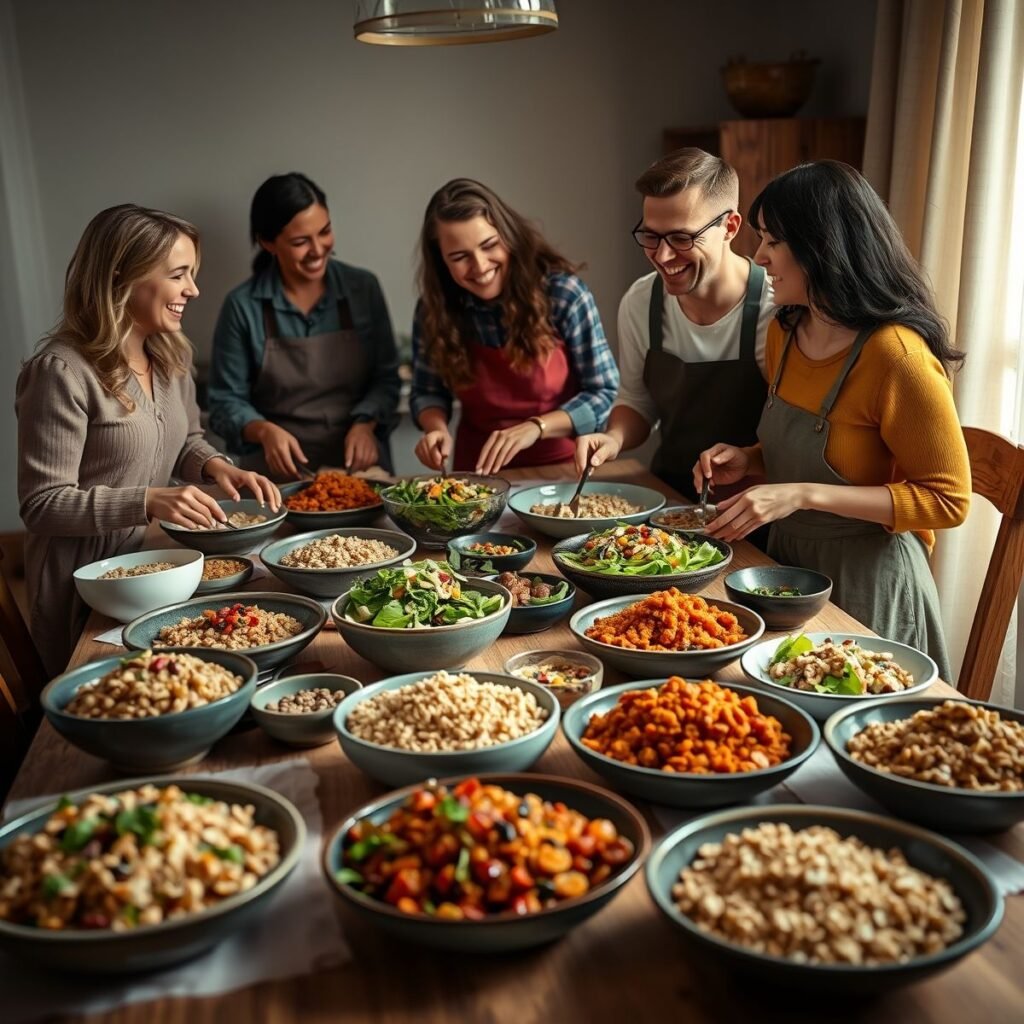Índice do Conteúdo
- Understanding Whole Grains
- Thanksgiving Prep Without the Panic
- The Benefits of Whole Grain Recipes
- Incorporating Whole Grains into Your Diet
- Delicious Whole Grain Breakfast Ideas
- Nutritious Whole Grain Lunch Options
- Hearty Whole Grain Dinner Recipes
- Snacks with Whole Grains
- Whole Grains and Meal Prep
- Whole Grain Recipes for Special Diets
Understanding Whole Grains
Whole grains are cereal grains that contain all essential parts and naturally occurring nutrients of the entire grain seed. This includes the bran, germ, and endosperm. Common examples of whole grains include brown rice, quinoa, oats, barley, and whole wheat. Incorporating whole grains into your diet is crucial for healthy eating, as they are rich in fiber, B vitamins, and various important minerals.
The Benefits of Whole Grain Recipes
Whole grain recipes are celebrated for their numerous health benefits. They help in reducing the risk of heart disease, diabetes, and certain cancers. Additionally, meals prepared with whole grains tend to be more filling, which can aid in weight management. By choosing whole grains over refined grains, you increase the nutritional value of your meals significantly.
Incorporating Whole Grains into Your Diet
Incorporating whole grains into your daily meals can be simple and enjoyable. Start by substituting refined grain products with whole grain alternatives. For instance, choose whole grain bread instead of white bread, or opt for brown rice over white rice. This small change can have a substantial positive impact on your overall health. Exploring different whole grains can also diversify your meals and introduce new flavors.
Delicious Whole Grain Breakfast Ideas
Breakfast is the perfect opportunity to start your day with whole grains. Consider oatmeal topped with fresh fruits and nuts, or whole grain pancakes made with whole wheat flour. A quinoa breakfast bowl with yogurt and berries is another nutritious option that fuels your morning. These meals not only provide lasting energy but also keep you satisfied until lunchtime.
Nutritious Whole Grain Lunch Options
For lunch, whole grain recipes can be both easy and delicious. A whole grain salad featuring farro or barley mixed with vegetables and a light dressing makes for a refreshing meal. Whole grain wraps filled with lean proteins and plenty of greens are another great option. These meals are not only filling but also provide essential nutrients to keep you energized throughout the day.
Hearty Whole Grain Dinner Recipes
Dinner is an excellent time to experiment with hearty whole grain recipes. Dishes like brown rice stir-fry with vegetables and tofu or whole wheat pasta with a rich tomato sauce and veggies can be both satisfying and nutritious. You can also make a savory quinoa casserole with your favorite proteins and vegetables, creating a wholesome meal that the whole family will enjoy.
Snacks with Whole Grains
Snacking doesn’t have to be unhealthy. Whole grain snacks like popcorn, whole grain crackers, or homemade granola bars can satisfy your cravings while providing nutritional benefits. Opt for snacks that are minimally processed and contain no added sugars to ensure you’re making the healthiest choices possible.
Whole Grains and Meal Prep
Meal prepping with whole grains can save you time and help you maintain a healthy diet throughout the week. Cook larger batches of grains like quinoa or brown rice at the beginning of the week and store them in the fridge. You can easily mix and match them with different proteins and vegetables for quick and nutritious meals, ensuring that healthy eating is convenient and accessible.
Whole Grain Recipes for Special Diets
Whole grains can fit into various dietary needs, including vegetarian, vegan, and gluten-free diets. For those following a gluten-free diet, grains like quinoa, millet, and brown rice are excellent choices. Vegan recipes can include hearty grain bowls or stuffed peppers filled with a mixture of grains, beans, and vegetables. The versatility of whole grains allows for countless delicious and nutritious dishes for every taste.



